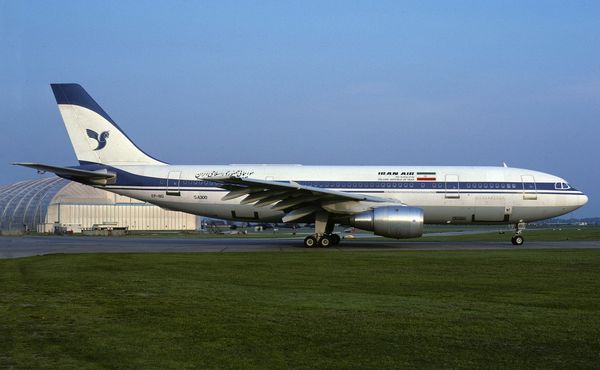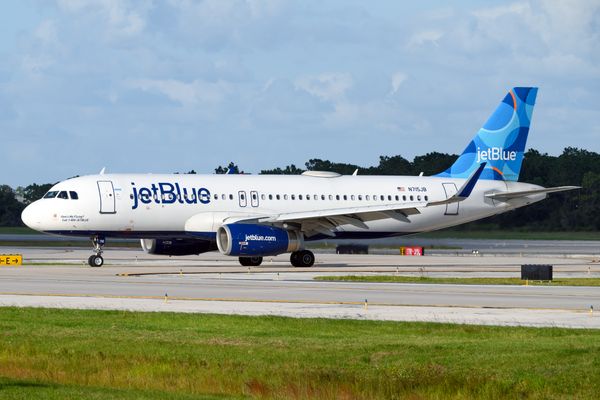The US National Transportation Safety Board (NTSB) has issued an alert regarding a defective component in certain Boeing 737 aircraft that could potentially cause rudder control system failure.
This safety concern affects approximately 350 parts supplied by Collins Aerospace, a subsidiary of RTX, for select 737 Max and 737 NG models.
Boeing 737 Rudder Issues
In response to this critical issue, the NTSB has directed urgent safety recommendations to the Federal Aviation Administration (FAA) and Boeing. The FAA reports that United Airlines Holdings is the sole US carrier with the affected parts, but the agency believes the airline has already discontinued their use.
The problem stems from an incorrectly assembled sealed bearing on the components, known as actuators. According to the NTSB's findings, this manufacturing flaw has left the unsealed area vulnerable to moisture infiltration, which could freeze and restrict rudder system movement.
Boeing has acknowledged the issue and is collaborating with its supplier to develop additional guidance for addressing this potential rudder system malfunction.

The aircraft manufacturer had previously notified operators of a possible problem in August and has committed to ensuring that flight crews have appropriate operating procedures.
RTX, the parent company of Collins Aerospace, has pledged close cooperation with the NTSB and Boeing throughout the investigation. The company also supports affected airlines to minimize operational disruptions.
This safety concern adds to Boeing's mounting challenges following a January incident where a fuselage panel detached from a 737 Max aircraft shortly after takeoff. The plane maker is grappling with a significant labor strike, bringing production to a standstill at its Seattle-area jetliner factories.
NTSB Uncovered Issue
The National Transportation Safety Board (NTSB) uncovered a critical flaw while investigating a February 6 incident involving a United Airlines-operated Boeing 737 Max 8. The plane's rudder pedals jammed during landing at Newark Liberty International Airport, though no injuries or damage occurred.

Boeing faces NTSB recommendations to review procedures for pilots encountering similar situations and to alert crews operating affected planes about potential in-flight system jams.
The safety board urged the Federal Aviation Administration (FAA) to assess whether faulty parts should be removed from aircraft and to direct operators accordingly.
The NTSB also advised the FAA to notify international aviation regulators if part removal is necessary.
Responding to these recommendations, the FAA has accepted the NTSB's guidance and scheduled a review board meeting for Friday to determine future actions. The agency, a NTSB investigation participant, closely monitors the situation.
Essential Legal Tips for Tourists Chartering a Yacht in Dubai » Mixed Signals: The Tragic Story of Iran Air Flight 655 »
Comments (0)
Add Your Comment
SHARE
TAGS
NEWS BoeingBoeing737Boeing737 MAXBoeing 737 IssuesNTSBRECENTLY PUBLISHED
 Essential Legal Tips for Tourists Chartering a Yacht in Dubai
Discover how yacht rentals in Dubai are regulated and learn what every tourist should know about contracts, insurance, and taxes before setting sail.
TRIP REPORTS
READ MORE »
Essential Legal Tips for Tourists Chartering a Yacht in Dubai
Discover how yacht rentals in Dubai are regulated and learn what every tourist should know about contracts, insurance, and taxes before setting sail.
TRIP REPORTS
READ MORE »
 Mixed Signals: The Tragic Story of Iran Air Flight 655
What would have otherwise been a routine passenger flight across the Strait of Hormuz culminated in a heartbreaking tragedy, all because of a costly system misunderstanding by an external party. This is the tragic story of Iran Air Flight 655.
STORIES
READ MORE »
Mixed Signals: The Tragic Story of Iran Air Flight 655
What would have otherwise been a routine passenger flight across the Strait of Hormuz culminated in a heartbreaking tragedy, all because of a costly system misunderstanding by an external party. This is the tragic story of Iran Air Flight 655.
STORIES
READ MORE »
 My Unexpectedly Cheap Last-Minute Getaway with JetBlue Airlines
My name is Daniel Moreno. I live in Tampa, Florida, and I work as a logistics coordinator at a small distribution company. I had to book a JetBlue Airlines flight at the last minute. I was sure the price would be high because that’s usually what happens with late bookings within the United States. But the final cost surprised me — the ticket was much cheaper than I expected.
TRIP REPORTS
READ MORE »
My Unexpectedly Cheap Last-Minute Getaway with JetBlue Airlines
My name is Daniel Moreno. I live in Tampa, Florida, and I work as a logistics coordinator at a small distribution company. I had to book a JetBlue Airlines flight at the last minute. I was sure the price would be high because that’s usually what happens with late bookings within the United States. But the final cost surprised me — the ticket was much cheaper than I expected.
TRIP REPORTS
READ MORE »



